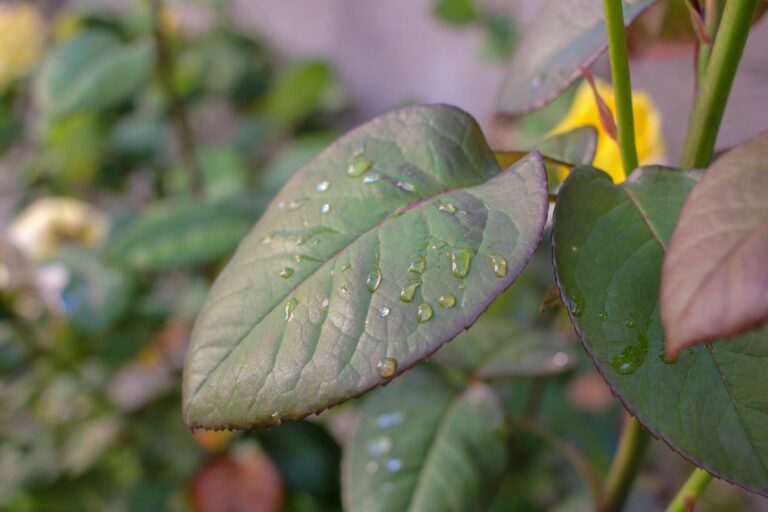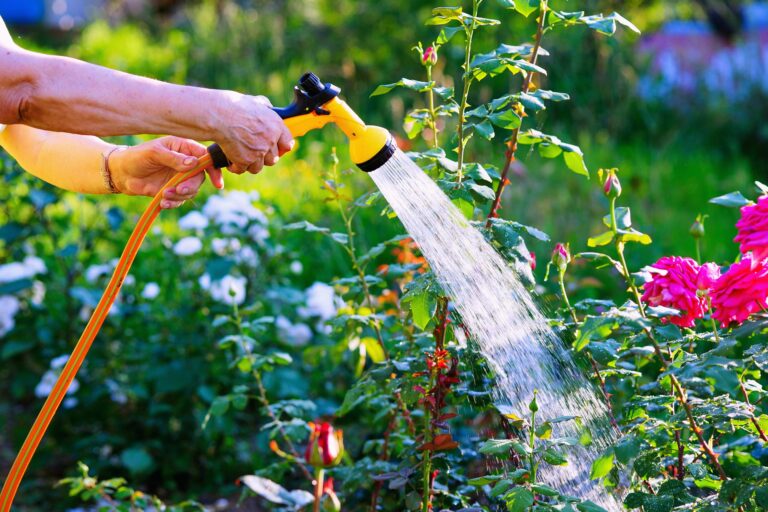Nutrient Imbalances
A rose requires a balanced supply of 16 essential nutrients to thrive. Too much or too little of any one can result in visible symptoms and hinder plant health. Many of these imbalances can be diagnosed through visual cues, often aided by color photographs or diagnostic charts. While there are dozens of possible nutrient-related issues—including toxicities such as excess sodium—only a few are commonly observed in roses.

Fortunately, only a handful of nutrient imbalances are frequently encountered in garden settings. Consulting Rosarians and home gardeners alike should be familiar with the following four common conditions:
- Nitrogen deficiency. Nitrogen is a mobile nutrient and can be lost from the soil through leaching, volatilization, or bacterial denitrification. As a result, it often needs to be replenished. Roses deficient in nitrogen typically display pale yellow-green foliage, stunted growth, and smaller-than-normal stems. Imbalanced soil pH—either too high or too low—can also interfere with nitrogen uptake.
- Oxygen deficiency. Oxygen deficiency results when roots are deprived of adequate air, typically due to overwatering or compacted, poorly drained soil. Early signs include general chlorosis, followed by interveinal yellowing as the condition worsens.
- Iron deficiency. Iron deficiency is typically identified by interveinal chlorosis—yellowing between the veins while the veins themselves remain green. Unlike true deficiencies, this condition usually stems from iron being present but unavailable due to factors such as high soil pH, poor aeration, high soluble salts, or excess levels of manganese, zinc, or phosphorus. Foliar iron sprays can provide temporary relief. Soil pH management is key to long-term correction.
- Leaf burn. Leaf burn appears as brown, crispy edges on leaves and is caused by water not reaching leaf margins. This may result from over-fertilization (especially with synthetic fertilizers), high soil salinity, insufficient watering, heat stress, or spray damage. Often, it’s a combination of these stressors that leads to visible symptoms.
Understanding and identifying nutrient imbalances is essential for maintaining healthy, vigorous rose bushes. By learning to recognize the signs of common deficiencies—and knowing how to correct them—gardeners and Consulting Rosarians alike can support resilient plants that bloom beautifully season after season. Regular soil testing, thoughtful fertilization, and attentive watering practices all contribute to preventing these issues before they impact your roses.
Suggested Resources and Further Reading:
- American Rose Society – Learn to Read the Leaves
- University of California Agriculture & Natural Resources – UC Master Gardeners
- Gardening Know How – Iron Deficiency in Roses
- Colorado State University Extension – Diagnosing Nutrient Deficiencies
- Utah State University Extension – Soil Nutrient Management


